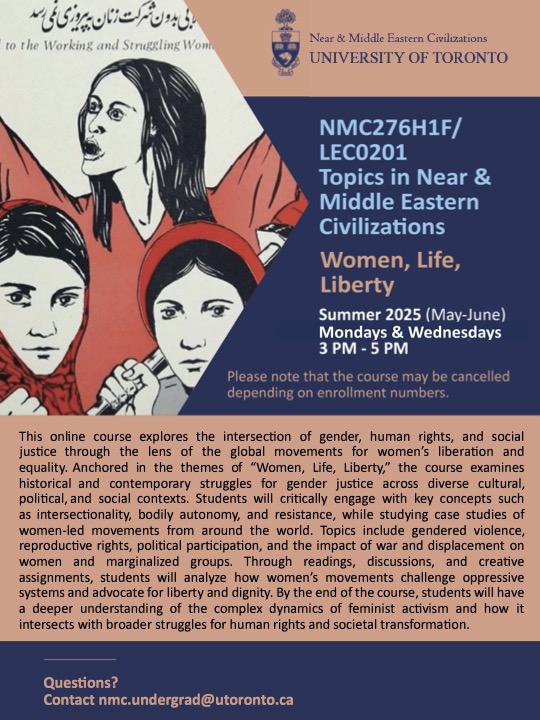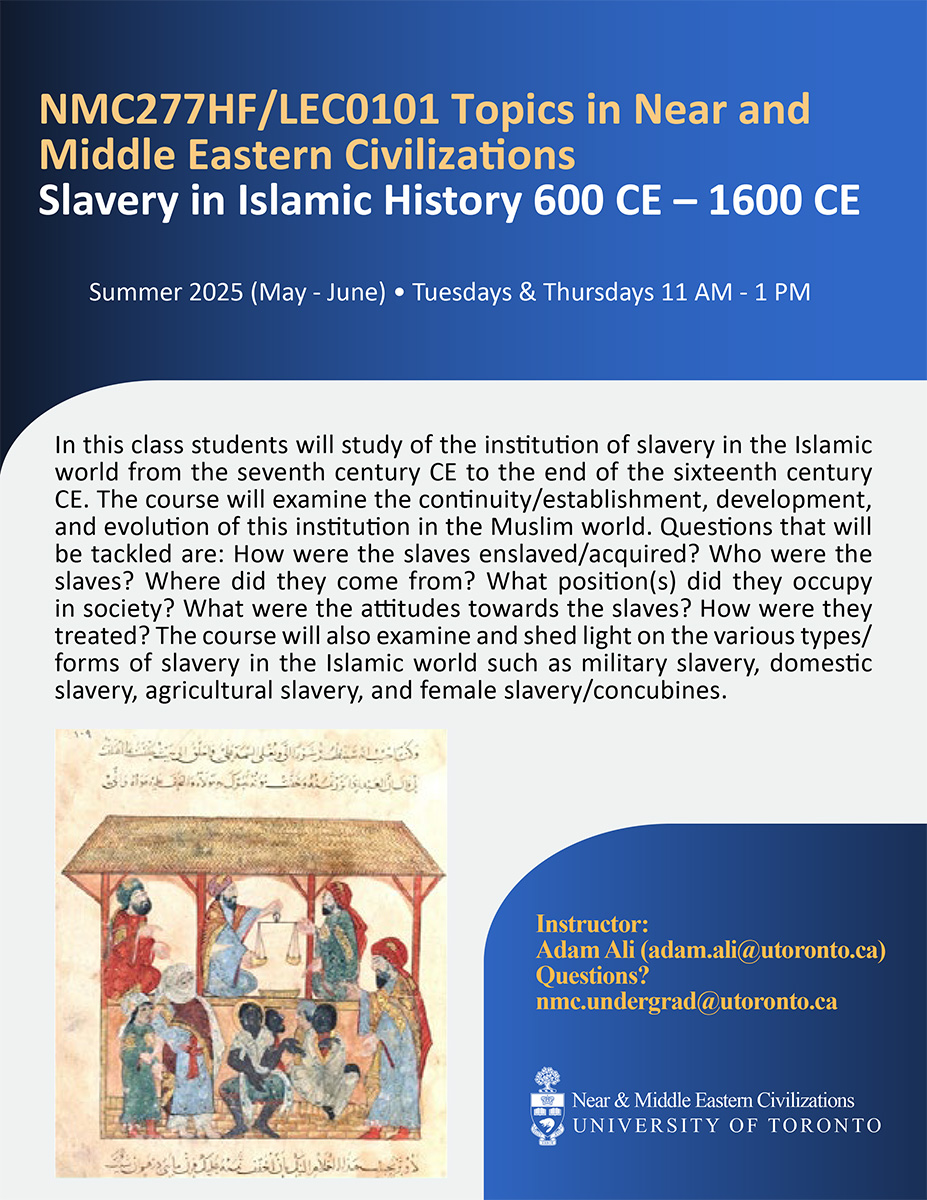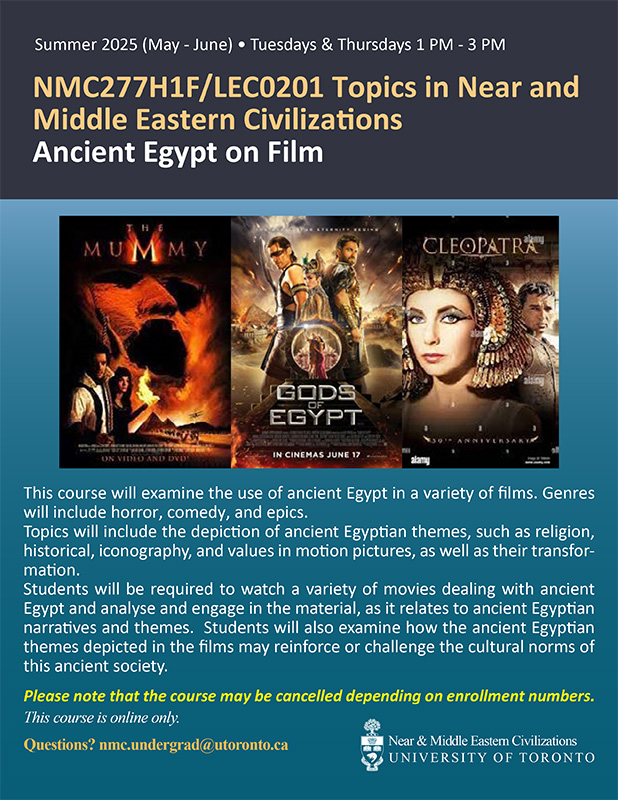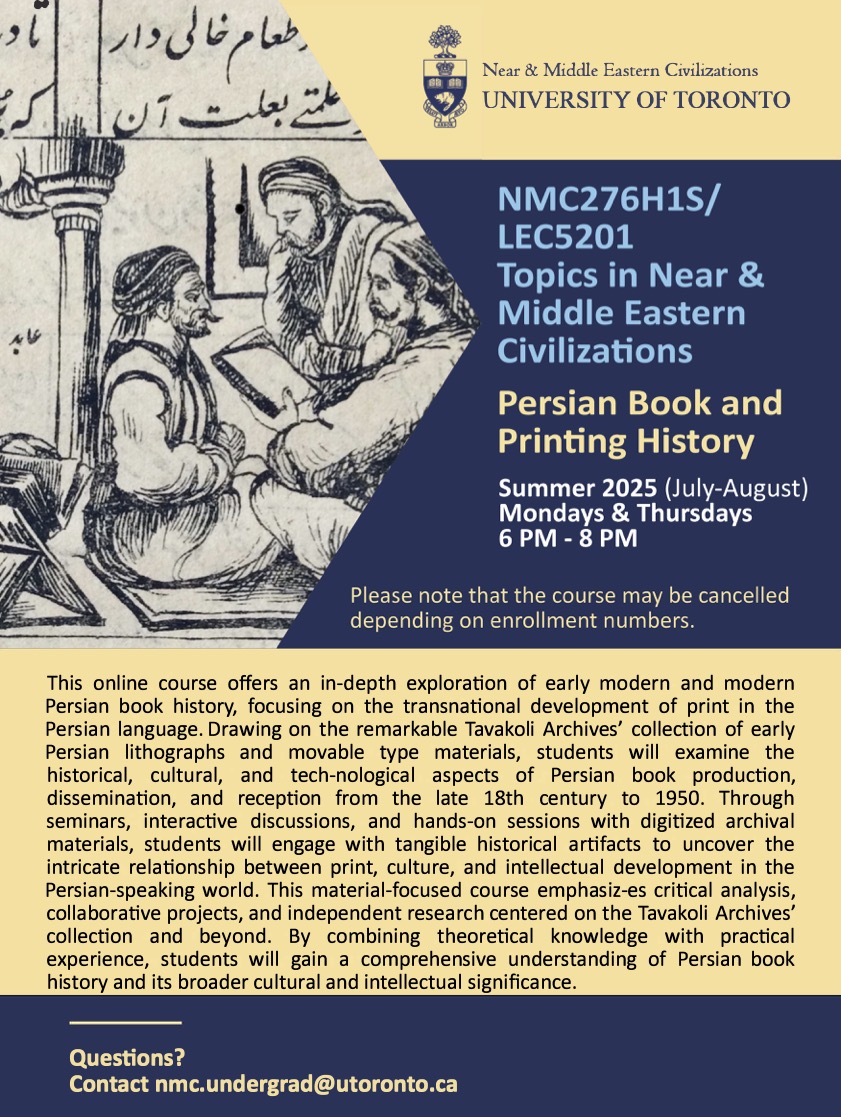To view all courses with instructors, day/time and number of seats available:
View the Timetable Builder to search for courses
In Timetable Builder, select your Faculty & Session.
Step 1:
- In the Faculty/Division field, select Faculty of Arts & Science.
- In the Session field, select the terms for the courses you are interested in taking. Note: If you select Summer First Sub-Session 2025 (F) and Summer Second sub-Session 2025 (S), you will not see Summer Full Session 2025 (Y) courses. You have to select all three terms or 'summer 2025' to see F, S and Y courses.
Step 2:
- You can search for courses using Course Code, Course Title, or Keyword, , or entering NMC in the Department/Subject Area field.
*The summer 2025 Timetable is subject to change, and we encourage you to check back often for updates.
NMC Summer Course Enrolment Process
1. U of T Students: Enroll in NMC summer courses through ACORN.
2. Non-U of T Students: If you are not a U of T student, please review the registration options below to determine the best option for you.
1) Current University Undergraduate Students
If you are currently enrolled in an undergraduate degree program at another recognized university and wish to take NMC summer courses for credit toward your degree, you must apply as a visiting student through Woodsworth College at the University of Toronto. Please follow the instructions provided here: Am I eligible? | Woodsworth College
* APPLICATIONS for the 2025 Summer academic session are now open and will close on April 8, 2025.
2) Non-University Students
If you are not currently enrolled in a university undergraduate program, you may register as a non-degree student at the University of Toronto to take NMC courses. Please refer to more information with the link provided here: Non-Degree Applicants | Faculty of Arts & Science
3) Auditors (No Course Credit)
The Department of Near and Middle Eastern Civilizations allows students to audit courses under the following conditions:
- Instructor permission is required.
- Classroom capacity must allow for auditors.
- A maximum of one NMC/NML course may be audited per term.
- The number of auditors is limited:
- Online courses: Up to 10% of students (minimum of 1 auditor per smaller class).
- In-person courses: Up to 5% of students (minimum of 1 auditor per smaller class).
*Auditors are not evaluated, do not submit assignments, do not participate in online discussions, do not write tests and examinations, and not get any course credit. The Department of Near and Middle Eastern Civilizations does not issue a Certificate of Attendance or keep a record of attendance. For more details, visit: Audit NMC Undergraduate Courses | Department of Near & Middle Eastern Civilizations.
NMC 2025 Summer Courses
* Please note that the course may be cancelled depending on enrollment numbers.
* Click the course title to view the details of the course.

This course explores the ways in which women are portrayed as villains or heroes in the Hebrew Bible. We will discuss the roles and characterization of women in the Hebrew Bible, taking into consideration the social context in which the text was written. We will read closely (in English translation) biblical texts featuring female characters, and we will examine a variety of scholarly and artistic interpretations of these characters.

This course explores the intersection of gender, human rights, and social justice through the lens of the global movements for women’s liberation and equality. Anchored in the themes of ""Women, Life, Liberty,"" the course examines historical and contemporary struggles for gender justice across diverse cultural, political, and social contexts.
Students will critically engage with key concepts such as intersectionality, bodily autonomy, and resistance, while studying case studies of women-led movements from around the world. Topics include gendered violence, reproductive rights, political participation, and the impact of war and displacement on women and marginalized groups.
Through readings, discussions, and creative assignments, students will analyze how women’s movements challenge oppressive systems and advocate for liberty and dignity. By the end of the course, students will have a deeper understanding of the complex dynamics of feminist activism and how it intersects with broader struggles for human rights and societal transformation.

This intensive 6-week summer course offers a curated exploration of the dynamic visual culture of the Middle East in contemporary times. Through key themes and mediums, we examine the cultural, social, and political forces shaping the region’s visual landscape and artistic productions.
Students will engage with foundational theories, including Orientalism, image rhetorics, propaganda, traditionalism, and globalization, to understand the implications of these visual and artistic expressions. The course explores a variety of mediums, such as public art (murals, memorial monuments), photography, digital productions (films, video art), and illustrated books.
The primary goal is to equip students with the skills to critically analyze visual materials and articulate their insights effectively in both speech and writing. Additionally, students will gain an overview of the fundamental social and cultural movements influencing the Middle East today, fostering a deeper understanding of this vibrant region.
Ideal for those seeking to enhance their ability to interpret and discuss images and public art, this course offers a rigorous and enriching journey into the contemporary visual culture of the Middle East.

In this class students will study of the institution of slavery in the Islamic world from the seventh century CE to the end of the sixteenth century CE. The course will examine the continuity/establishment, development, and evolution of this institution in the Muslim world. Questions that will be tackled are: How were the slaves enslaved/acquired? Who were the slaves? Where did they come from? What position(s) did they occupy in society? What were the attitudes towards the slaves? How were they treated? Did The course will also examine and shed light on the various types/forms of slavery in the Islamic world such as military slavery, domestic slavery, agricultural slavery, and female slavery/concubines.

This course will examine the use of ancient Egypt in a variety of films. Genres will include horror, comedy, animation, and epics. Topics will include the depiction of ancient Egyptian themes, such as religion and historical, images, and values in motion pictures, as well as their transformation.
Students will be required to watch a variety of movies dealing with ancient Egypt and analyse and engage in the material, as it relates to ancient Egyptian narratives and themes. Students will also examine how the ancient Egyptian themes depicted in the films may reinforce or challenge the cultural norms of this ancient society.
A survey of Coptic art, archaeology and architecture. The course will cover aspects of the religious, civil and daily life of the Copts: their houses, religious architecture, funerary monuments, art and artefacts.
Some fled. Others complained. Some wept. Others were commanded not to weep. Being a biblical prophets typically meant a hard life—who wants to hear a message of coming punishment for sinful behavior? This course is an introduction to the often bizarre and almost always difficult to understand prophets and prophetic books of the Bible. Focus will be on situating the prophetic authors within the history of ancient Israel and reading the sources texts (the Bible itself) to understand the prophetic messages. No prior work in biblical studies or knowledge of Hebrew is required.

This course offers an in-depth exploration of early modern and modern Persian book history, focusing on the transnational development of print in the Persian language. Drawing on the remarkable Tavakoli Archives' collection of early Persian lithographs and movable type materials, students will examine the historical, cultural, and technological aspects of Persian book production, dissemination, and reception from the late 18th century to 1950.
Through seminars, interactive discussions, and hands-on sessions with digitized archival materials, students will engage with tangible historical artifacts to uncover the intricate relationship between print, culture, and intellectual development in the Persian-speaking world. This material-focused course emphasizes critical analysis, collaborative projects, and independent research centered on the Tavakoli Archives' collection.
By combining theoretical knowledge with practical experience, students will gain a comprehensive understanding of Persian book history and its broader cultural and intellectual significance.

This intensive Persian course introduces students to the basics of the language, its writing system, sound patterns, grammar, and vocabulary. Designed for absolute beginners in the language, the course serves as preparation for Introductory-level Persian language courses at the university (i.e., NML260 or PRS210).
A questionnaire on students' knowledge of and background in Persian will be administered shortly before or during the first class. Exclusion: Native speakers

This course will look at the various types of textual and physical evidence (such as ostraca and tomb/temple reliefs) for sexuality in ancient Egypt. A wide range of topics will be covered, including aphrodisiacs, sexual imagery, contraception, same sex desire, sex for procreation v. pleasure, and of course the famous Turin Erotic Papyrus. Both text and artefacts will be used to discuss and support the way in which sex was viewed and thought about in ancient Egypt, in order to demonstrate that the ancient Egyptian civilization dealt with the same sexual issues that we deal with today. Finally, the notion of sexual desire and pleasure will be examined through the use of iconography.
All texts will be read in translation.

This course examines the complex interrelationship between identity and violence within the religious traditions of the Ancient Near East, spanning from the Sumerian period through to the Persian Empire. It will explore how religious beliefs, practices, and narratives shaped and were shaped by identity formation, both on the level of the individual and the collective. Special attention will be given to the ways in which violence—whether ritualistic, sacrificial, or military — was intertwined with religious concepts of power, purity, justice, and divinity. Texts from key civilizations, including Mesopotamia, Israel, Egypt, Anatolia, and Persia, will be studied and analyzed to see how the sacred was both a tool of social cohesion and a source of conflict.


